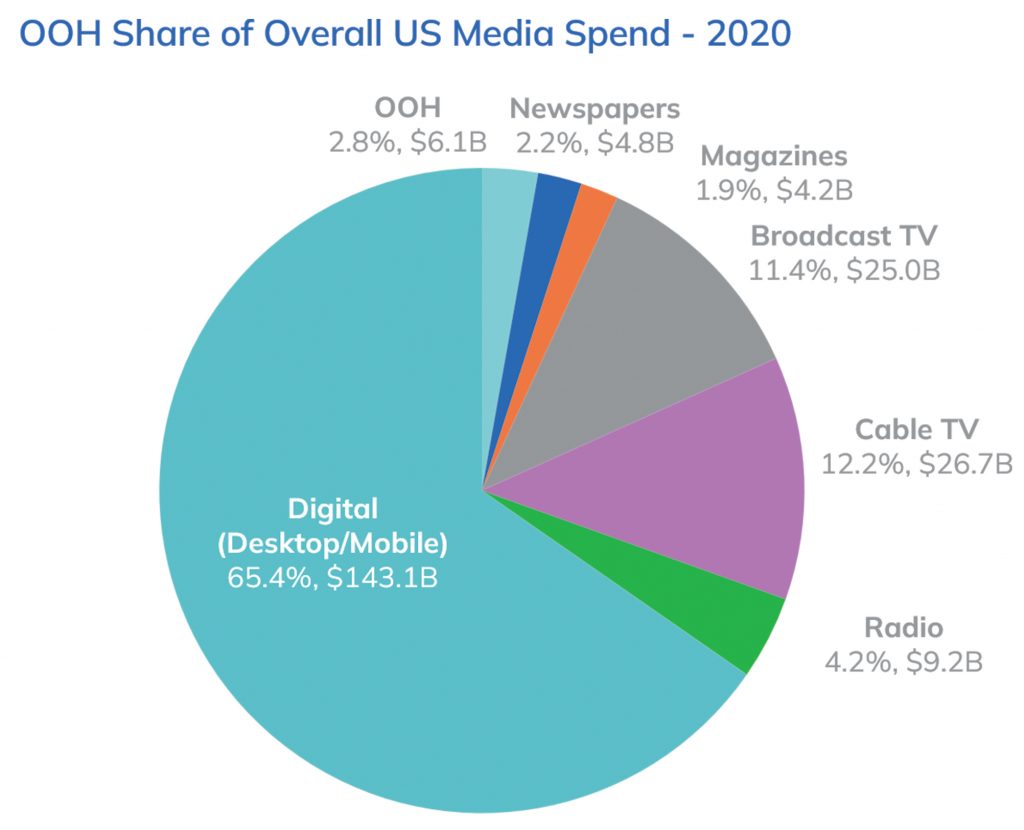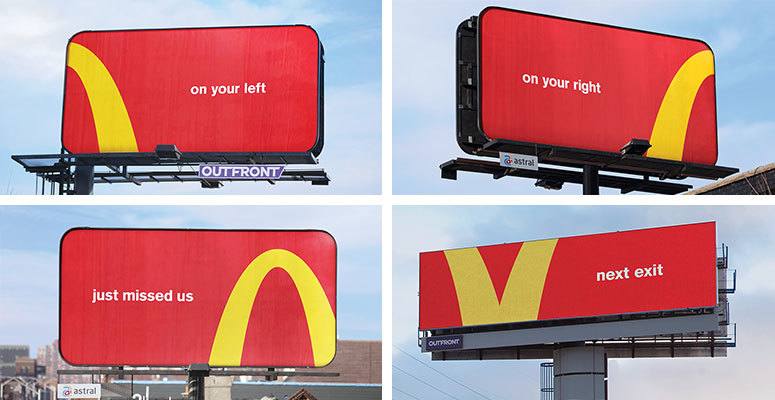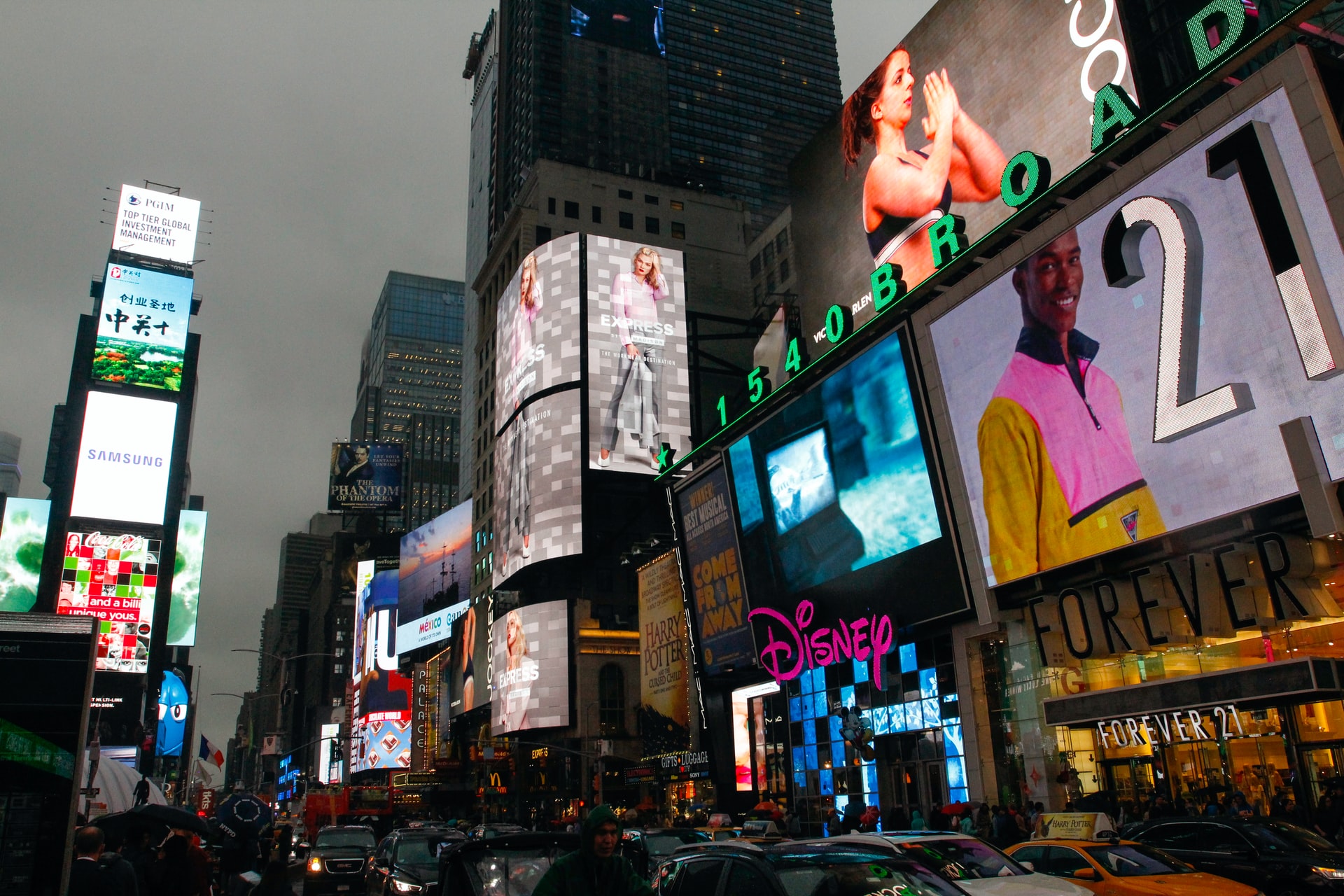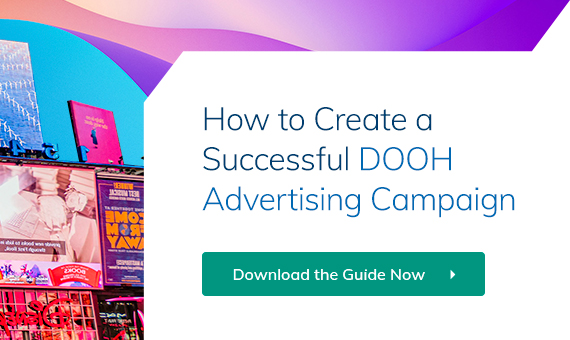Outdoor advertising is a hugely effective way to reach mass audiences. It’s simple, it’s accessible (there are more digital billboards out there than ever before), and perhaps most importantly, it’s cost effective.
To provide a timely example of how much bang outdoor marketing offers for your buck, the Outdoor Advertising Association of America (OAAA) calculates that, for the price of a Super Bowl ad slot, outdoor advertising can reach an audience ten times the size.
Furthermore, Out of Home advertising (OOH) has a higher recall than any other traditional advertising platform:

Despite this, out of home constitutes a low proportion of media spend in comparison to broadcast and cable TV:

This means that outdoor advertising efforts present a huge opportunity for advertisers. With a well-planned campaign and a couple of useful techniques, you could be increasing your revenues in an arena with relatively little competition.
Here’s how.
1. Use audience interaction to increase engagement
OOH advertising is a brilliantly interactive medium if you use it wisely. Encouraging passers-by to interact with your ads increases brand recognition and ad recall, and can lead to direct sales.
Using outdoor advertisement on digital billboards, bus station advertising, digital street furniture and other forms of place-based OOH, there are two simple but effective options for encouraging audience interaction.
OOH and Social Media
Your first option is to tie your outdoor media into a wider social media campaign – for example, by encouraging people to take a selfie or share something on social media with a designated hashtag. Incentivizing this with competition prizes is a great way to encourage further interaction.
This helps to generate trends on social media as well as providing potentially usable user-generated content (UGC), making outdoor advertising a valuable part of a multi-platform advertising strategy.
OOH and QR Codes
QR codes are digitally generated barcodes which consumers can scan with a smartphone or tablet. When this happens, they perform an action, such as opening a website or a maps app.
These are hugely powerful tools for turning casually interested passersby into immediate customers.
A QR code could open your homepage, ecommerce site, booking page or directions to your business right there on consumers’ mobile devices. This allows you to close on a direct sale straight from your ad and avoids traditional OOH’s reliance on later recall among consumers.
2. Use Proximity-Based Media to Encourage Passing Trade
If your business is reliant on passing trade – a high street café, for example, or an out-of-town dining establishment – your outdoor ads can be made more effective with proximity-based marketing.
Proximity-based marketing is using your customers’ location as a way of marketing your products. It’s a highly targeted form of marketing that is super effective within a local area, and outdoor advertising is particularly well suited to it.
Buying advertising space on inventory close to your brick-and-mortar business can drive local footfall significantly. This increases even further if you add directions to your business, to your OOH ads – such as McDonalds did with its Golden Arches campaign. Simply using segments of its iconic golden ‘M’, McD’s digital billboard ads drove sales from the highway.

(Source: eat-marketing.co.uk)
3. Use Programmatic DOOH to Target Ready to Buy Audiences
You can now buy space on outdoor advertising using automated bidding platforms, rather than via intermediary buying agencies. This is known as ‘programmatic DOOH’.
With programmatic DOOH, not only can you reach mass audiences, you can reach consumers that are naturally more ready to make a purchase decision. A local sports bar with a terrace, for example, will sell more beers on a home game day when the sun is shining. So, why not only pay for outdoor signage during those times, when there are more potential customers around and there’s a higher chance of a return on investment as a result?
Use programmatic DOOH to buy ad space based on footfall, weather conditions, time of day amongst others, to increase the effectiveness of your advertising by reaching the right target audience.
Read more: How Does Programmatic OOH Work?
4. Take a Data Driven Approach to Outdoor Advertising Using pDOOH
You analyze the success of your marketing campaigns on all your other platforms. Now, you can do it for outdoor advertising too, in real time.
Ultimately, if you don’t measure your campaign, you can’t improve it. A major issue for traditional OOH media has been that it’s difficult to measure in real time – reports can be compiled by your media buying agency, but by the time you receive them, the conclusions are out of date.
If you opt to buy outdoor advertising programmatically you get access to analytics as the data is generated, including overall impressions, eCPM, individual screen performance and planned/spent budget data. This is because pDOOH platforms monitor ad performance in real time and feeds that data straight back to your dashboard.
This makes it significantly easier to pinpoint key issues and optimize your campaign, improving overall effectiveness.
5. Find an Effective pDOOH Platform
The right demand side platform is essential for leveraging the benefits of programmatic DOOH. You don’t want to be limited by an outdoor advertising company or be left wanting over the range of analytics options on offer.
The Neuron is an intuitive pDOOH platform that connects you instantly to a global range of inventory holders. Planning and executing your outdoor marketing campaign is facilitated through single-click processes and real-time data feeds, making it easier to generate a return on your investment.


